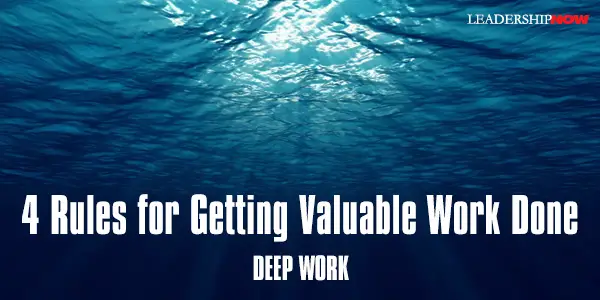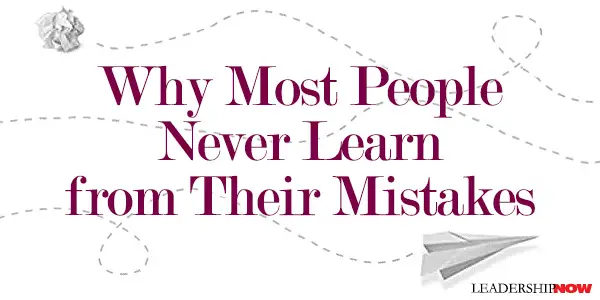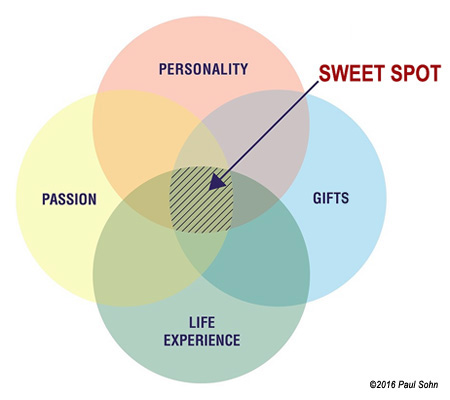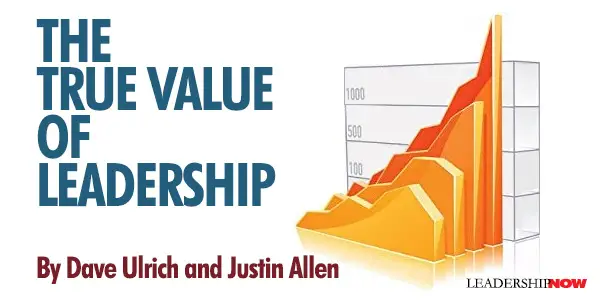 Leading Blog | Posts by Month |
 Leading Blog | Posts by Month |
01.31.16

LeadershipNow 140: January 2016 Compilation
See more on
Posted by Michael McKinney at 04:30 PM
01.29.16

4 Rules for Getting Valuable Work Done
TO THRIVE IN the new economy—the current information economy—you need to master these two core abilities:
These two abilities depend on your ability to perform deep work. Cal Newport bases his book Deep Work on the Deep Work Hypothesis: The ability to perform deep work is becoming increasingly rare at exactly the same time it is becoming increasingly valuable in our economy. As a consequence, the few who cultivate this skill, and then make it the core of their working life, will thrive. Learning is an act of deep work. An act of intense focus. “To produce at a peak level you need to work for extended periods with full concentration on a single task free from distraction.” The reason deep work is rare is that we encourage distractions by the way we design our life. “An interruption, even if short, delays the total time required to complete a task by a significant fraction.” Deep work is not a priority. We are what we focus on and that is increasingly, the superficial. Shallow work adds to our sense of meaninglessness. Science writer Winifred Gallagher observed that “when you lose focus, your mind tends to fix on what could be wrong with your life instead of what’s right.” Newport adds: “A workday driven by the shallow, from a neurological perspective, is likely to be a draining and upsetting day, even if most of the shallow things that capture your attention seem harmless or fun.” To fight the drift into the superficial we need to cultivate some strategies to develop a deep work habit. Here are a few Newport suggests: Find Your Deep Work Philosophy Newport describes four approaches to making time for deep work. There is the Monastic approach that eliminates or radically minimizes shallow obligations. The Bimodal approach that suggests binging on deep work for various lengths of time. The Rhythmic approach makes deep work a habit by scheduling a regular chain of deep work in your day. The last approach and the one Newport prefers, is called the Journalistic approach. Using this approach you fit deep work wherever you can into your schedule. This last approach, however, requires a great deal of willpower and practice. The Rhythmic approach may work best to get you started. Take Breaks from Focus Make deep work a priority by taking breaks from focus, not from distraction. “The idea motivating this strategy is that use of a distracting service does not, by itself, reduce your brain’s ability to focus. It’s instead, the constant switching from low-stimuli/high-value activities to high-stimuli/low-value activities, at the slightest hint of boredom or cognitive challenge, that teaches your mind to never tolerate an absence of novelty.” Quit Social Media Network tools such as Facebook, Twitter, Instagram and infotainment sites like Business Insider and Buzzfeed, “fragment our time and reduce our ability to concentrate.” The overuse of social media unwittingly cripples our ability to succeed in the world of knowledge work. “To master the art of deep work, therefore, you must take back control of your time and attention from the many diversions that attempt to steal them.” Newport recommends that we only use a tool if its positive impact on the core factors that determine our success and happiness, substantially outweigh it negative impacts. If you give your mind something meaningful to do throughout all your waking hours, you’ll end the day more fulfilled, and begin the next one more relaxed, than if you instead allow your mind to bathe for hours in semiconscious and unstructured Web surfing. Be Intentional with Your Time Have a plan for your day. Confine the shallow work you must do, don’t eliminate it. If you start your day with blocks of deep work scheduled in, you stand a much better chance of actually getting some deep work done. “Your goal is not to stick to a given schedule at all costs; it’s instead to maintain, at all times, a thoughtful say in what you’re doing with your time going forward—even if those decisions are reworked again and again as the day unfolds.” “To succeed,” writes Newport, “you have to produce the absolute best stuff you’re capable of producing—a task that requires depth. A deep life is a good life.” 
Posted by Michael McKinney at 08:54 AM
01.27.16

Leadership Value is Defined by the ReceiverWE ALL RESONATE with the clarion call for leaders to build on their strengths, be authentic, and demonstrate emotional intelligence. We can envision these noble, resonant, and genuine leaders as icons of effective leadership. But these virtuous leadership attributes are not the essence of leadership effectiveness.Building on one’s strengths is incomplete unless one’s strengths strengthen someone else. Authenticity without a positive impact on someone else is more narcissism than leadership. Effective leaders turn their emotional intelligence into helping others find their purpose and meaning. An underlying principle of effective leadership is that value is defined by the receiver more than the giver. This value-added principle applies in almost every relationship. When I give my wife a gift, she defines the value of the gift. When I was newly wed, I got her tickets to sporting events and she often suggested I enjoy myself. I have learned that the real gift is figuring out what will be meaningful to her, not me. Likewise, effective leaders recognize and serve the stakeholders who are impacted by their strengths, authenticity, and emotional style. They then work to deliver value to these stakeholders in ways that matter to the stakeholders. When leaders focus on the value they create for others, they think less about who they are and how who they are, will make others better. They realize that the value of their values is in that others will achieve what matters to them. Ultimately, leaders are measured by what they leave behind and how their present actions shape future success. Leaders should be asking themselves, “Who are the stakeholders I care about? Who do I want to make better because of what I do? Who will benefit from my choices today? How will my actions be seen by and affect others?” When pondering and responding to these questions, leaders matter because they create sustained leadership in others. Value creating leaders talk more about “we” than “I”; they build on what is right more than what is wrong; they help others feel better about themselves when leaving an interaction with them; the work to institutionalize their ideas so that they are sustained; and they relish success in those they mentor. It is time to look beyond a leader’s personal strengths, authenticity, and emotional well being to define how leaders’ build value for others. 
Posted by Michael McKinney at 07:07 PM
01.22.16

Why Most People Never Learn from Their Mistakes
THE purpose of Black Box Thinking is to describe how success happens. Progress hinges on how we react to failure. In two of the most safety-critical industries – aviation and health care – the approach to failure is very different. And the results highlight the problem. For commercial aviation on Western-built jets, they have only one accident per 2.4 million flights. In health care, the equivalent of two jumbo jets are falling out of the sky every twenty-four hours making preventable medical error in hospitals the third biggest killer in the United States behind only heart disease and cancer. The problem lies in how they approach failure. “A failure to learn from mistakes has been one of the single greatest obstacles to human progress.” For all of the talk about not being afraid of failure, we are not learning what we should. Our organizational and personal cultures tend to evade and cover-up the issues. How do we react when something has gone wrong?  The author, Matthew Syed, describes black box thinking as “the willingness and tenacity to investigate the lessons that often exist when we fail, but which we rarely exploit. It is about creating systems and cultures that enable organizations to learn from errors, rather than being threatened by them.” Why? “Failure is rich in learning opportunities for a simple reason: in many of its guises, it represents a violation of expectation. It is showing us that the world is in some sense different from the way we imagined.” Nicely put. Learning from failure is easier said than done. The more we have at stake (especially our egos) the more likely we are to manipulate the evidence. Consider this: When we’re confronted with evidence that challenges our deeply held beliefs we are more likely to reframe the evidence than we are to alter our beliefs. We simply invent new reasons, new justifications, new explanations. Sometimes we ignore the evidence altogether. One of the difficulties we have when analyzing failures (and analyzing success for that matter) is that we rely on information based on hunches. Our intuitions are often wrong. We need to get down to the details so we can isolate the effect of any action so we are solving the right problem. David Brailsford, the general manager of the British cycling Team Sky put it this way: “People think it is exhausting to think about success at such a high level of detail. But it would be far more exhausting, for me anyway, to neglect doing the analysis. I would much rather have clear answers than to delude myself that I have the ‘right’ answers.” An organization (and even individuals) can go on for decades thinking that their success is linked to a particular factor when in reality it is the cause of their failures. And they never make the connection because their assumptions have never been tested or analyzed. We must change our relationship with failure. We are not born with a fear of failure. It’s how we learn. It’s only over time that we are taught a fear of failure and lose our growth mindset. We can only improve in environments where we have the right kind of meaningful feedback. Fear of failure is not the real enemy; it is recrimination and defeatism that often accompanies failure. We need to eradicate blame and encourage growth responsibility. Syed writes: “If we drop out when we encounter problems, progress is prevented, no matter how talented we are. If we interpret difficulties as indictments of who we are, rather than pathway to progress, we will run a mile from failure. Grit, then, is strongly related to the Growth Mindset; it is about the way we conceptualize success and failure.” Through the use of a wide variety of examples, Syed pushes you to think differently about failure and success. More importantly, he teaches us how to look beyond our easy answers and effectively get to the real issues and causations. 
Posted by Michael McKinney at 09:13 AM
01.18.16

Now is the Time to Find Your Sweet Spot
AS A TWENTY-SOMETHING, Paul Sohn said his life looked so good on paper. But a growing feeling of disappointment overwhelmed him. He wondered, “Is this all there is?” He was experiencing a quarter-life crisis. It can happen at any age especially when you get caught up in these five approaches that he identifies in Quarter-Life Calling: How to Find Your Sweet Spot in Your Twenties:Fear and Anxiety: Instead of enjoying where you are at you allow the uncertainty of the world around you to overwhelm you with stress and a sense of trepidation. The Choice Overload: We allow the choice we have to paralyze us. This is brought on “by a recent phenomenon called FOMO (Fear of Missing Out). Twentysomethings live in a 24/7 plugged-in culture. We live in an era where we are accosted by the incessant meals, vacations, parties, and sheer awesomeness people are experiencing—thanks to Facebook, Twitter, and Instagram. According to a new study by Eventbrite, 69 percent of millennials experience FOMO when they can’t attend something that their family or friends are going to.” Too Busy to Slow Down: Are we doing the things we really should be doing? We are overscheduled, overworked and overcommitted. The Obsessive Comparison Disorder: We can always find people who are doing better than us and we want what everyone else has. ‘Millennial expert Paul Angone calls this Obsessive Comparison Disorder (OCD). He says, “OCD is the smallpox of our generation.” This is an epidemic that is producing unwanted thoughts and feelings, driving us into depression, consumption, anxiety, and all-around discontent. The grass is not always greener on the other side. The YOLO/FOMO Generation: You only live once. It’s easy to get stuck in the moment. Social media encourages this thinking and the resulting drift into instant gratification and self-absorption. Paul Sohn is talking to twenty-somethings but we all can learn from his experience. The context changes but the principles are the same. The answer is to find your sweet spot—that place where you are living out your calling. Sohn says it is found at the intersection of your personality (who you are wired to be), gifts (that which you are naturally gifted in), passions (that which ignites a fire in your soul), and life story (what doors have opened and closed in your life). It is here that you will find your purpose that will lead you to a meaningful life.  In a noisy world it is hard to slow down enough to know yourself. Finding your sweet-spot begins with getting outside of yourself—seeing yourself from another perspective. A meaningful life comes from something outside yourself. Sohn found that in the Bible. It allowed him to integrate his life around a concept outside of his present. It makes all the difference. For twenty-somethings, Sohn says the key is to start well. Start early. As a clinical psychologist who specializes in twentysomethings, Meg Jay [author of Defining Decade] has observed how twentysomethings have considered this time as a throwaway decade, paying the price, professionally, personally, spiritually, and economically later in life. This is the biggest myth out there. No more procrastination. No more wasting away your time, talent, and treasure believing you can make it up later in life. Keep learning. Find mentors. Life isn’t meant to be a rat-race. You were meant to flourish. Begin today. 
Posted by Michael McKinney at 10:33 PM
01.15.16

Finding Your 30-Second Anchoring Technique
WE LIVE IN a hugely distracted world. Rush from one meeting to the next, have too many emails to answer on any given day. There are moments when it seems all we do is fly by the seat of our pants. Yes, every aspect of our work rhythms conspires to throw us off-center! Staying grounded feels like the impossible dream. I used to train actors. Have you ever wondered how an actor manages to be in the right frame of mind when the camera says “action?” How she accomplishes this amidst the relentless hustle and bustle of a movie set? Actors study the art of being in the optimal state of mind. Well, you are the actor in your own life, and your life will unfold with more grace the moment you master some of the same skills. We tend to call them anchoring techniques. Here are a few of my favorites. Beware – what works well for one person will not work as well for another. Part of your homework is to experiment and discover the technique that “does it” for you!
This is common-sense stuff, but here’s the conundrum. An anchoring technique, applied with quiet commitment, invokes a powerful inner shift within 30 seconds. When we’re under pressure, the last thing we tend to think about is our anchoring technique. I urge you to discover the one or two techniques that “do it” for you, every time. Make them a daily habit. And reap your anchoring rewards. 
Posted by Michael McKinney at 05:22 PM
01.05.16

The True Value of Leadership
LEADERSHIP, emotional intelligence, authenticity, and charisma are not enough. Leaders succeed when they add value to others. Without making others better, all the personal qualities of leadership are more self-serving narcissism than true leadership. Good leaders inspire employees to do their best. Better leaders build organizations that outlast and outlive individual leaders. But, the best leaders create investor confidence in future success. In recent years, investors have begun to look beyond current earnings to determine a firm’s true market value. Investors have examined intangibles like strategy, brand, and R&D to ensure that a firm will produce future not just past earnings. More recently, we have found that 25 to 30% of investment decisions can be traced to investors confidence in leadership. To determine the quality of leadership, investors can now access a Leadership Capital Index (see the book Leadership Capital Index: Realizing the Market Value of Leadership). This index gives investors a thorough and rigorous way to evaluate leadership. We envision investors starting to access and assess leadership insights much like they do financial and intangible results. The Leadership Capital Index examines both the personal qualities of a leader and the leadership team and the human capital systems that the leader puts in place. But, how can a leader initiate conversations that give investors confidence in their leadership ability? Here are some tips for leaders who want to realize more market value through their leadership. As an individual leader, you and your leadership team can inspire personal confidence from investors when you demonstrate:
As a leader, you should create an organization that has unique capabilities to deliver sustainable value over time. Work on creating:
When you show investors that you have created both individual leaders and organization capabilities, they will respond and give you more market value. This is the next agenda for both leaders who add value and investors who want to realize that value. 
Posted by Michael McKinney at 04:01 PM
01.01.16

First Look: Leadership Books for January 2016Here's a look at some of the best leadership books to be released in January.




For bulk orders call 1-800-423-8273  Build your leadership library with these specials on over 100 titles. All titles are at least 40% off the list price and are available only in limited quantities. “A house filled with books is a good place to live.” — Seth Godin
Posted by Michael McKinney at 10:23 AM
|
BUILD YOUR KNOWLEDGE


How to Do Your Start-Up Right STRAIGHT TALK FOR START-UPS 
Grow Your Leadership Skills NEW AND UPCOMING LEADERSHIP BOOKS 
Leadership Minute BITE-SIZE CONCEPTS YOU CAN CHEW ON 
Classic Leadership Books BOOKS TO READ BEFORE YOU LEAD |
|